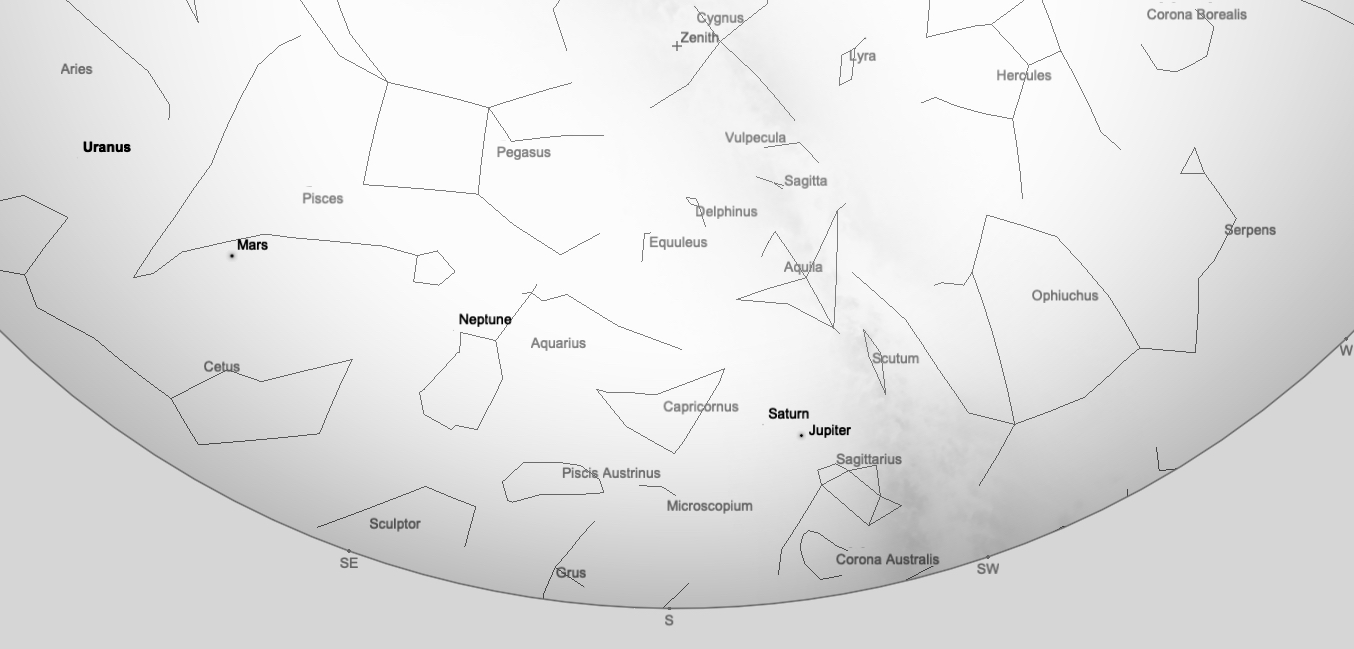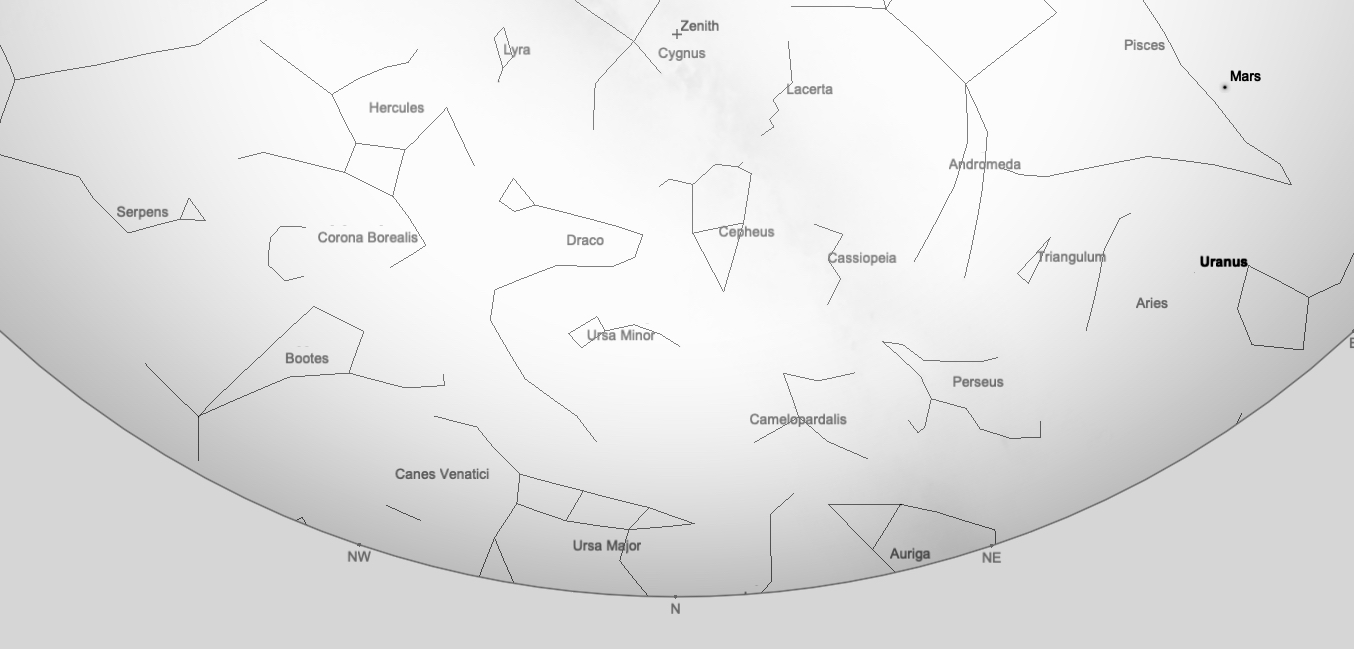Oct 01 Th 17:05 Full Moon (Harvest Moon)
Oct 02 Fr 13:09 Venus-Regulus: 0.1◦ S
Oct 02 Fr 23:21 Moon-Mars: 0.8◦ N
Oct 09 Fr 20:39 Last Quarter
Oct 11 Su 8:27 Moon-Beehive: 2.2◦ S
Oct 13 Tu 19:10 Mars @ Opposition
Oct 13 Tu 19:57 Moon-Venus: 4.4◦ S
Oct 16 Fr 15:31 New Moon
Oct 22 Th 13:10 Moon-Jupiter: 2.1◦ N
Oct 22 Th 23:49 Moon-Saturn: 2.7◦ N
Oct 23 Fr 9:23 First Quarter
Oct 25 Su 13:14 Mercury Inferior Conj.
Oct 29 Th 11:13 Moon-Mars: 3.3◦ N
Oct 31 Sa 9:49 Full Moon (Blue Moon)
Oct 31 Sa 11:05 Uranus @ Opposition
Meteor Showers:
Draconid Draco (N) Oct. 7 10-100/hr 21P/Giacobini-Zinner
Orionid Orion (SE) Oct. 21 10-20/hr 1P/Halley
Mars watch: Mars at opposition on October 13. Only 38.595 million miles from Earth. Mars is rising in the east at around 8:00pm. Won't be this close or bright again for a while so get out during October and take a look!
Blue Moon on October 31 (Halloween) will not happen again on Halloween until 2038! So, this is rare event indeed!
Jupiter and Saturn are still very nice objects to observe.
Note: After dark you can observe Mars, Uranus, Neptune, Saturn, and Jupiter through most of October.
Venus is up in the eastern morning sky!
On Oct. 20, our NASA's OSIRIS-REX Asteroid Sample Return Mission will descend to the rocky, boulder-strewn surface of asteroid Bennu, touch down, attempt to collect a sample, and go back to a safe distance away.

